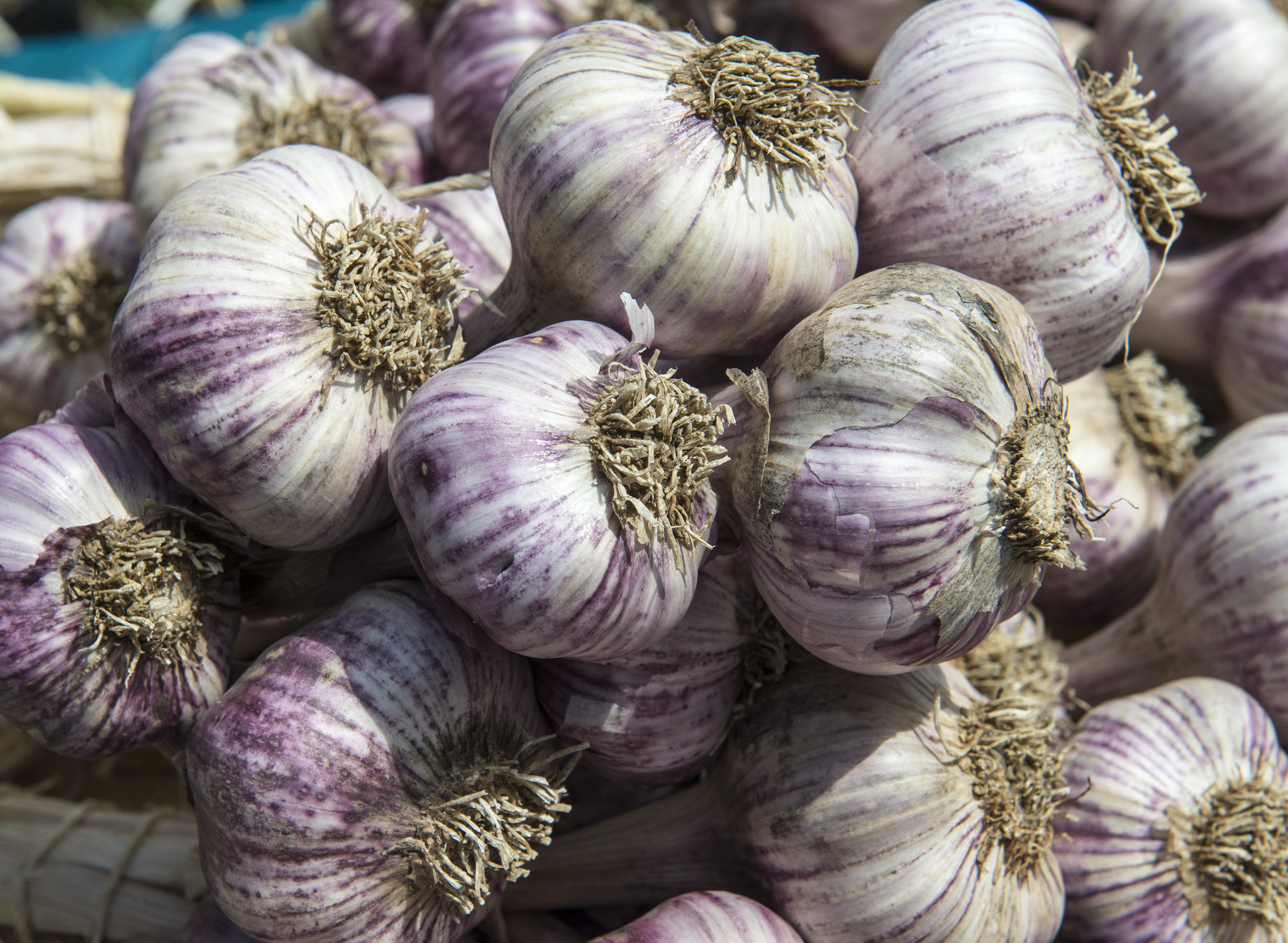Fall is a time to enjoy the harvest of summer, but don’t hang up your trowel and pull off your gloves just yet – September through November is the best time to plant garlic.
Garlic roots develop in the fall and winter, and by early spring they can support the rapid leaf growth that is necessary to form large bulbs, said Chip Bubl, a horticulturist with Oregon State University’s Extension Service.
What type of garlic should you plant? Some gardeners like to grow top-setting garlic, also called hardneck. Common hardneck types include Korean, Dujanski, Siberian, Music, Chesnock Red, German Red and Spanish Roja. These varieties produce tiny bulblets at the end of a tall flowering stalk in addition to a fat underground bulb of cloves.
Softneck garlic, on the other hand, rarely produces floral stems and tends to grow bigger bulbs because energy isn’t diverted to top-set bulblets. Softneck varieties include Silverskin, Inchelium Red, California Early and California Late.
Some enthusiasts say hardneck garlic has a richer, more pungent flavor than non-flowering types, but not all gardeners agree, Bubl said. Both can be harvested in early spring like green onions and sautéed as a side dish. Or you can allow them to mature until mid-July when they become a bulb with cloves.
Another type, elephant garlic, is actually a type of leek that produces large, mild-tasting cloves – usually fewer per bulb than the true garlics.
Bubl offers the following tips for growing garlic:
- First, add lime to the soil if you haven’t done so recently. Then, before planting cloves, work a couple tablespoons of 5-10-10 complete fertilizer, bone meal or fish meal into the soil several inches below where the base of the garlic will rest. Select healthy large cloves, free of disease. The larger the clove, the bigger the bulb you will get the following summer.
- Plant the garlic in full sun in well-drained soil. A sandy, clay loam is best. In heavier soil, plant it in raised beds that are two to three feet wide and at least 10 to 12 inches tall. Garlic has well-developed root systems that may grow more than three feet deep in well-drained soil. Plant cloves root side down, two inches deep and two to four inches apart in rows spaced 10 to 14 inches apart. Space elephant garlic cloves about six inches apart. Garlic can be lightly mulched to improve soil structure and reduce weeds. A single 10-foot row should yield about five pounds of the fragrant bulbs.
- Fertilize garlic in the early spring by side dressing or broadcasting with blood meal, pelleted chicken manure or a synthetic source of nitrogen. Just before the bulbs begin to swell in response to lengthening daylight (usually early May), fertilize lightly one more time. Weed garlic well, as it can’t stand much competition. Garlic is rarely damaged by insects. Most years, you won’t need to water unless your soil is very sandy. If May and June are very dry, irrigate to a depth of two feet every eight to 10 days. As mid-June approaches, taper off the watering.
- Remove the floral stems as they emerge in May or early June from hardneck varieties to increase bulb size. Small stems can be eaten like asparagus, but they get more fibrous and less edible as they mature. Don’t wait for the leaves to start dying to check for maturity. Sometimes garlic bulbs will be ready to harvest when the leaves are still green. The best way to know is to pull one up and cut it open crosswise to see if the bulbs are the right size. Start checking for mature cloves about late June. Harvest garlic when the head is divided into lump cloves and the skin covering the outside of the bulbs is thick, dry and papery. If left in the ground too long, the bulbs sometimes split apart. The skin may also split, exposing the cloves and causing them not to store well.
- Dig, and then dry the mature bulbs in a shady, warm, dry and well-ventilated area for a few days. Then remove the tops and roots. Brush dirt off the bulbs. To braid garlic together, harvest it a bit earlier while leaves are green and supple.
- Avoid bruising the garlic, as it will not store well. Store bulbs in a dark, dry and well-ventilated place. Protect from high humidity and freezing. Do not store garlic in the refrigerator because cool temperatures combined with moisture stimulate sprouting. Properly stored garlic should last until the next crop is harvested the following summer.

